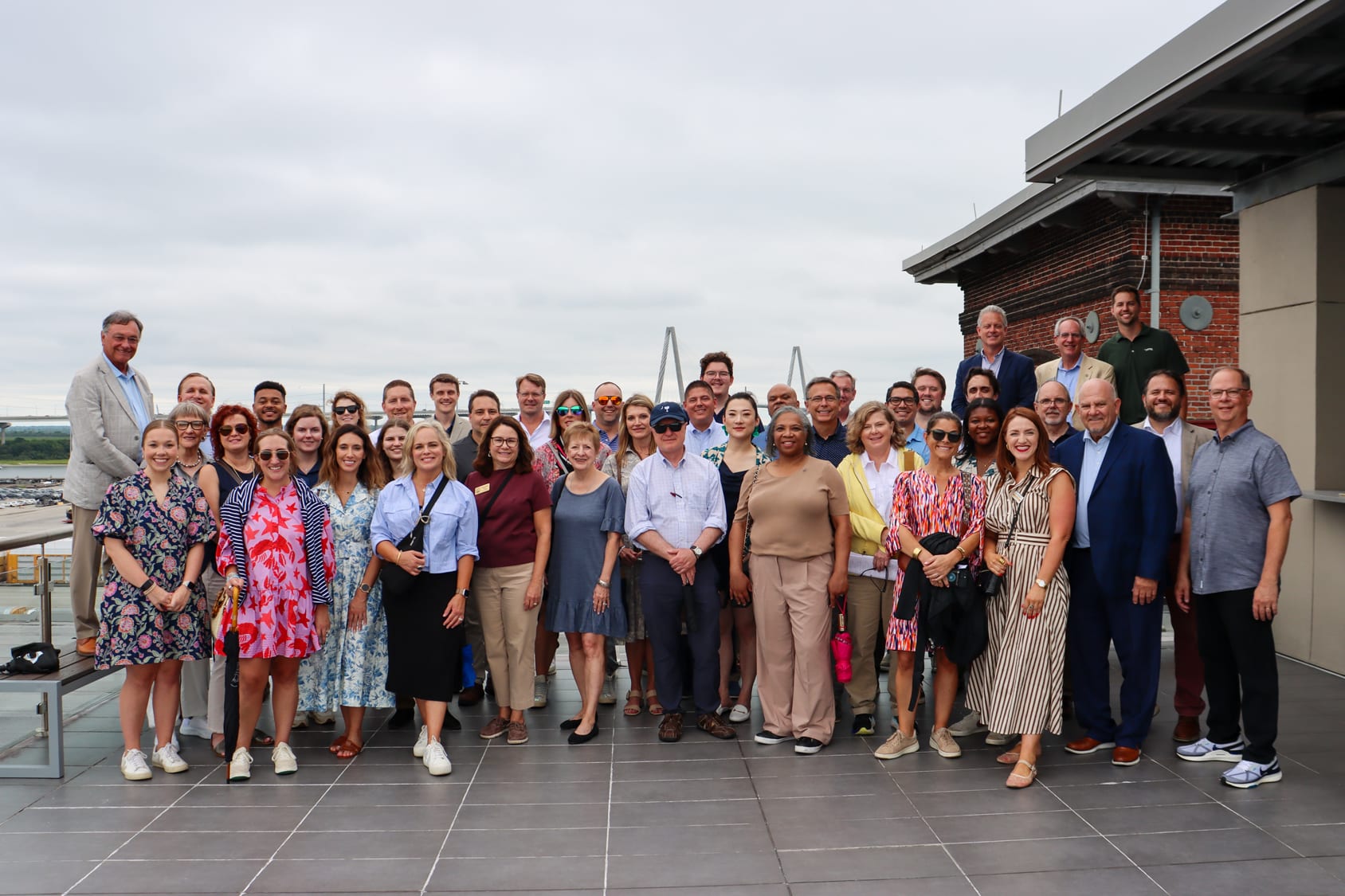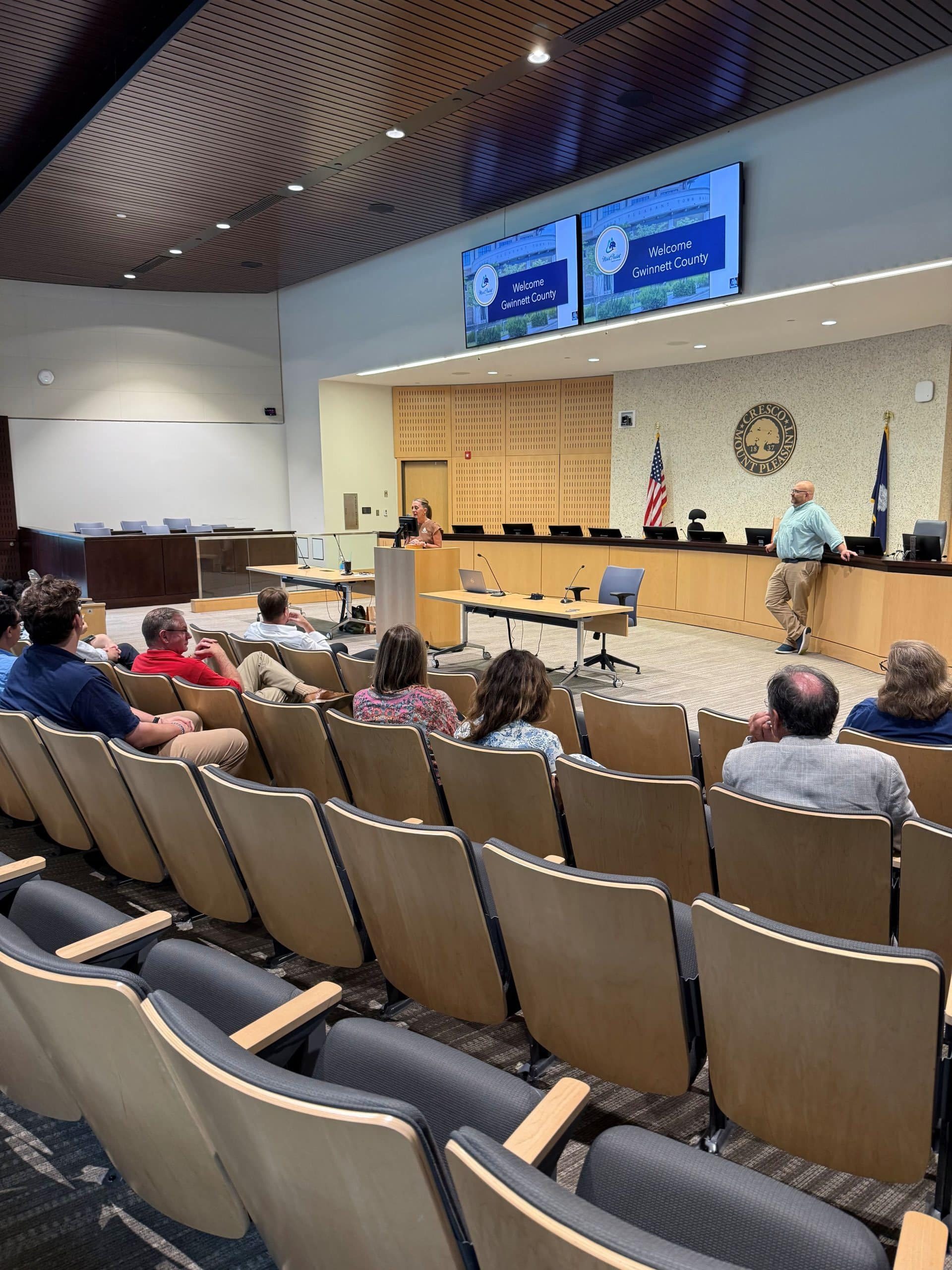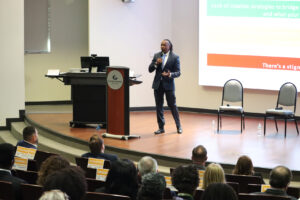Taking something old and without use and transforming into something impactful that revitalizes your community is close to a miracle. It takes partnerships, grit, dedication, and never-ending sheer will power. It goes beyond the traditional 9-5 roles and embodies the whatever it takes attitude to push projects across the finish line.
And that is exactly what we saw on the 2025 Redevelopment Peer Tour in so many different ways! This year, when the Redevelopment Peer Tour task force started its planning, there was a lot of discussion about where the next annual tour would be. After analyzing data from prior post event surveys, Charleston, SC was a recurring theme in the responses.
And so, the search began. What did Charleston, SC, showcase best when it came to redevelopment? It turns out, there was a lot we could see. So much, that we even could pull off a second tour immediately after and visit so many more sites! However, to be able to fit everything in, we narrowed it down to our final selections.
Here’s what we covered:
Redevelopment of the Navy Yard
The Refinery
The Cigar Factory
Mount Pleasant Overview
Archer School Apartments
Union Pier Tour
King Street Business Improvement District
Let’s get started!
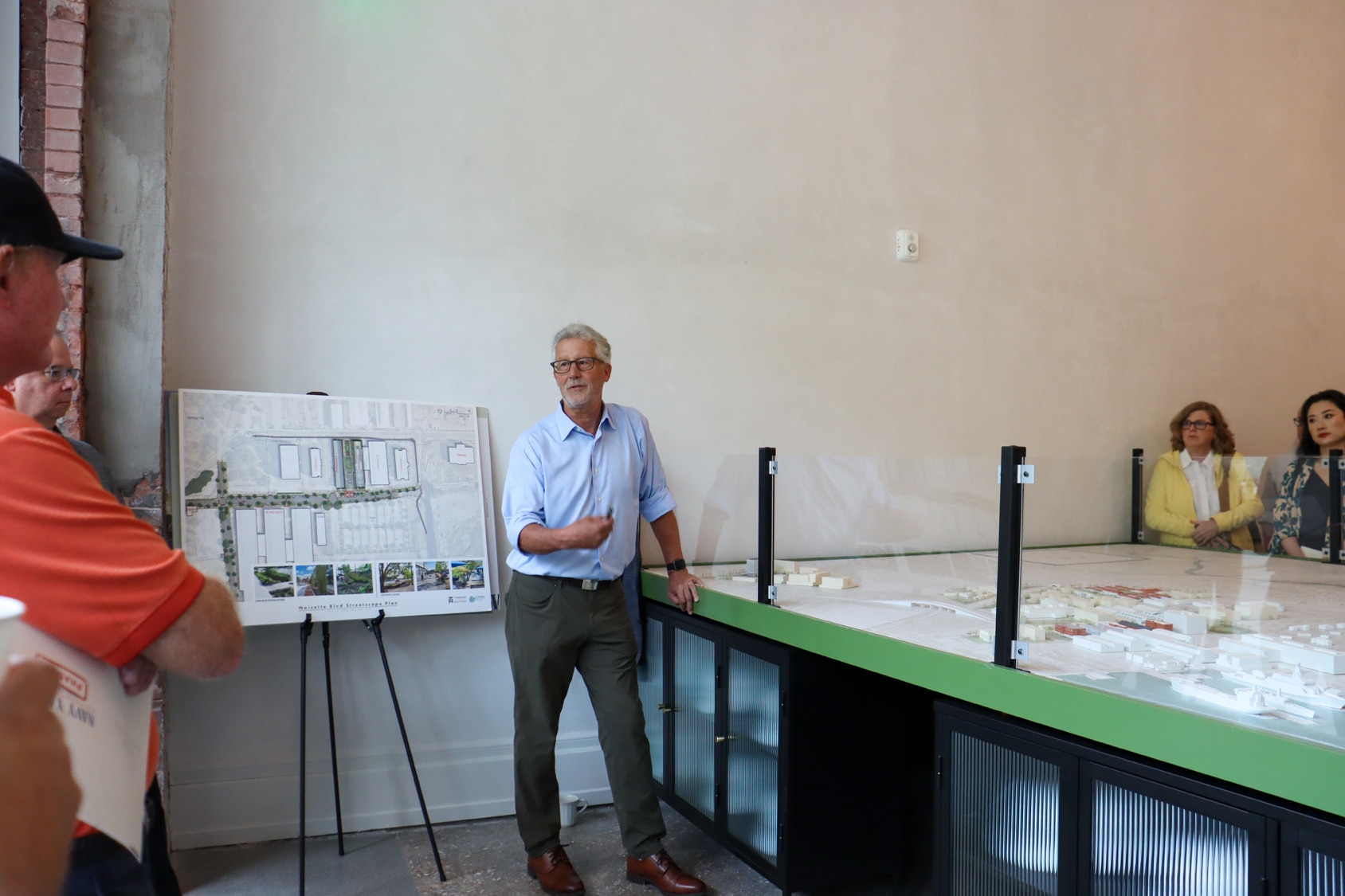
#1 Redevelopment of the Navy Yard
Once a bustling naval facility central to Charleston’s maritime history, the Navy Yard Charleston is now at the forefront of one of the region’s most ambitious redevelopment efforts. The sprawling waterfront site, long underutilized after the Navy’s departure, is being reimagined as a mixed-use community that will seamlessly blend residential neighborhoods, commercial hubs, and inviting public spaces.
Guiding our visit, Steve Dudash shared how the project team is striking a delicate balance between historic preservation and modern amenities. Original brick warehouses, steel-framed industrial structures, and commanding waterfront views are being preserved and repurposed, while new construction introduces contemporary design, state-of-the-art infrastructure, and amenities that meet the needs of today’s residents and businesses. The result is a place where history actively shapes the character and appeal of the new community.
We had the opportunity to step inside the first active tenant space, offering a glimpse of how the revitalized Navy Yard will feel once it’s fully activated. From there, we went on a behind-the-scenes tour of additional buildings that will soon be available for lease, walking through spaces still buzzing with the energy of construction crews putting the finishing touches on adaptive reuse projects.
The visit concluded with a walking tour of the redeveloped sections, where Steve pointed out the layers of transformation already in motion: improved waterfront access, pedestrian-friendly pathways, landscaped public areas, and restored historic structures now ready to welcome a new generation of tenants. It was clear that this is a long-term vision for turning a dormant industrial site into a thriving hub for living, working, and gathering, deeply rooted in Charleston’s heritage while opening doors to its future.
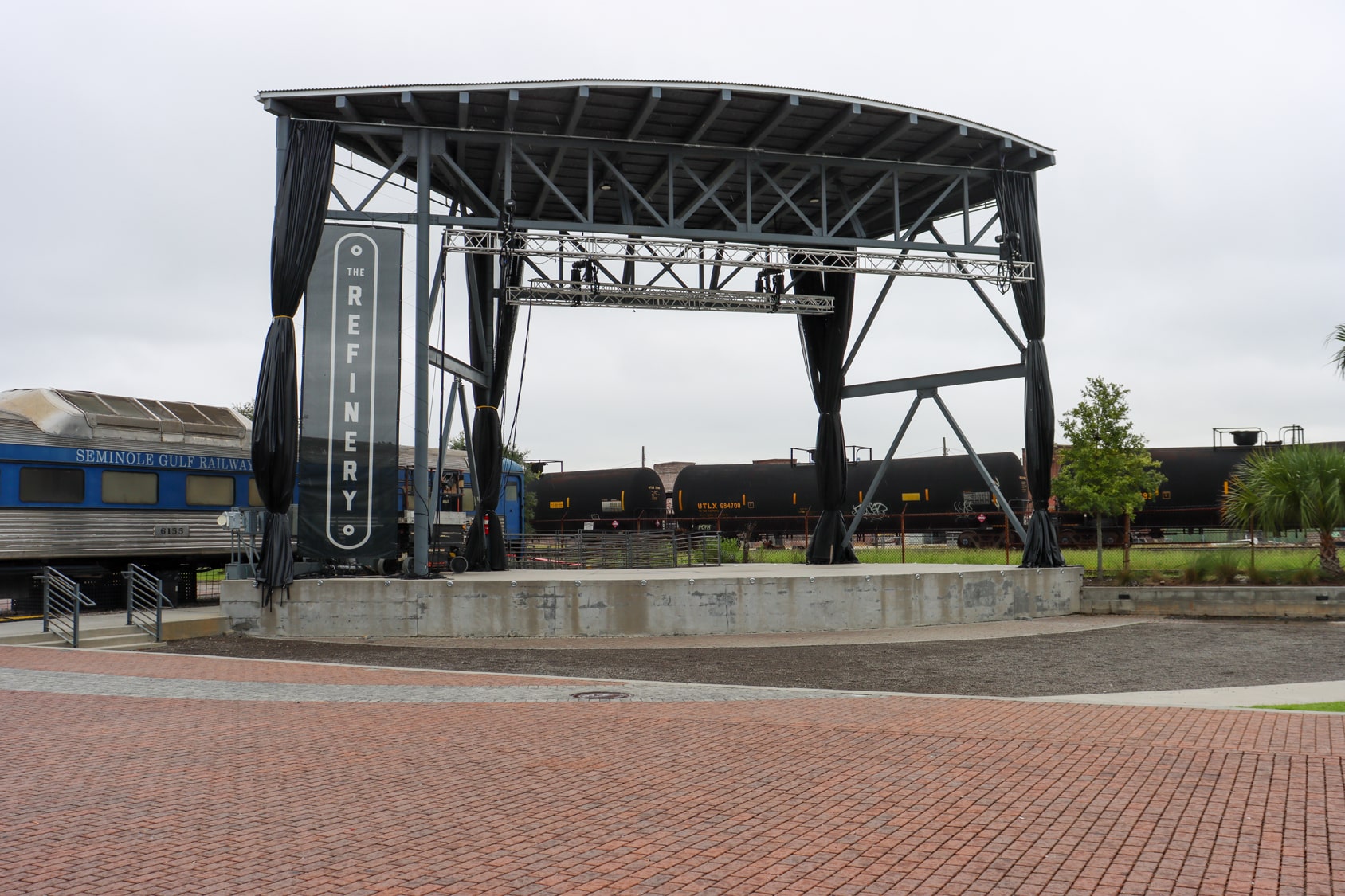
#2 The Refinery
This once-abandoned property, long seen as an eyesore in its community, has undergone a remarkable transformation into a thriving event venue and commercial space. What was once a deteriorating industrial relic, complete with environmental concerns and structural challenges, is now a vibrant hub of activity, proving that even the most neglected sites can find new purpose.
Lindsey Nevin walked us through the complex journey from blight to beauty, starting with the extensive cleanup effort required before any redevelopment could begin. The process was as much about environmental stewardship as it was about construction, ensuring that the site would be safe, sustainable, and ready for its next chapter.
Once the site was stabilized, the project faced its next hurdles: zoning challenges, community engagement, and creative financing.
Today, the building stands as a prime example of adaptive reuse done right. A space that honors its industrial past while embracing a future of creativity, commerce, and community gathering. From environmental cleanup to grand opening, it’s a testament to vision, persistence, and the belief that no building is beyond redemption.
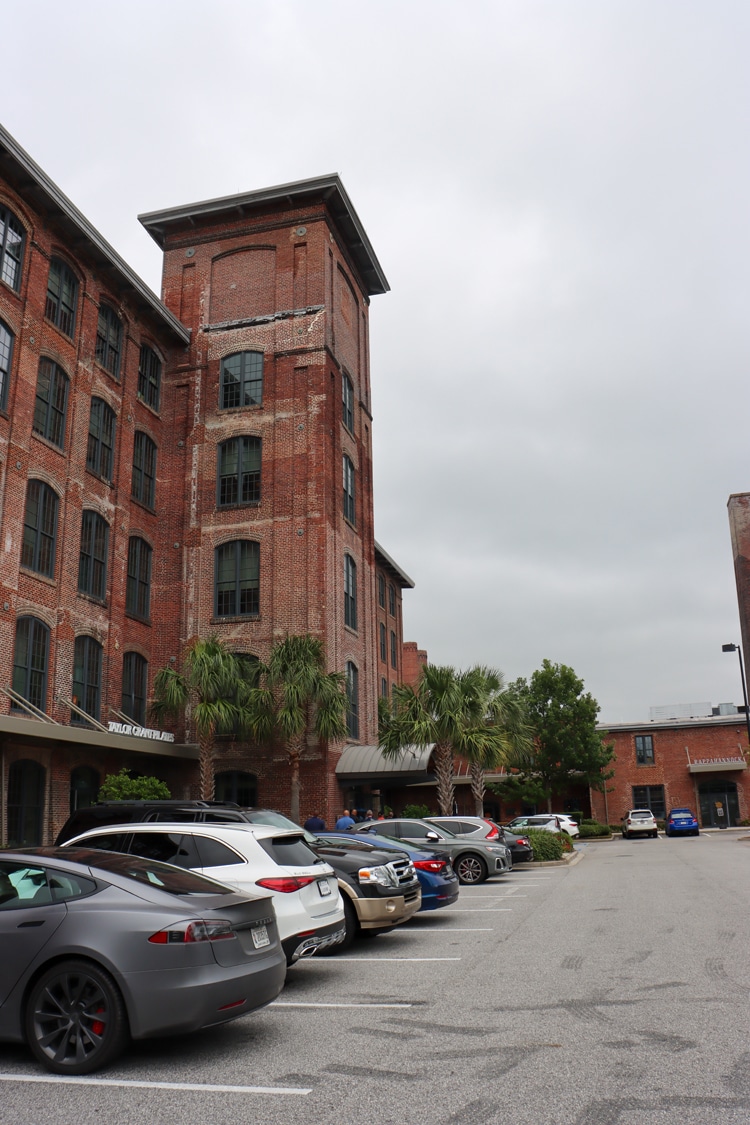
#3 The Cigar Factory
A historic icon in Charleston, the Cigar Factory is a masterclass in blending preservation with modern purpose. Built in the late 19th century, it has served many roles over the years, from textile production to one of the largest cigar manufacturing facilities in the nation, before eventually sitting vacant. Today, after a meticulous restoration, it has been reimagined as a dynamic mixed-use development housing office space, retail, dining, and even a home for education.
One of its most unique tenants is the Clemson University School of Architecture’s Charleston Center, which brings an academic and creative energy to the space. Within the restored industrial shell, architecture students work in open studio environments framed by original brick walls, massive heart pine beams, and expansive factory windows. The juxtaposition of the building’s historic craftsmanship with cutting-edge design education creates a living classroom, one where the architecture itself becomes a teaching tool.
Alongside the architecture school, the building hosts locally owned shops, creative office suites, and destination dining, making it a true mixed-use hub. The restoration preserves defining features, such as the exposed structural elements and original wood floors, while integrating modern infrastructure to meet current market demands.
The Cigar Factory proves that historic redevelopment can be both profitable and culturally significant. It honors Charleston’s industrial heritage, fosters innovation through education, and provides a model for how adaptive reuse can keep historic spaces not just relevant, but thriving in a modern economy.
#4 Mount Pleasant & Coleman Boulevard
Our tour extended beyond Charleston and across the Cooper River into Mount Pleasant, where we explored the transformation taking place along the Coleman Boulevard corridor: a key commercial artery that serves as both a local main street and a gateway to the town’s waterfront.
Guiding us through the area, Matt Brady and Christine Ferrell outlined the deliberate, multi-year effort to reimagine the corridor as a vibrant, walkable, and economically resilient destination.
Beyond the physical changes, the revitalization has been supported by strategic zoning updates designed to encourage mixed-use development, promote locally owned businesses, and balance growth with the preservation of Mount Pleasant’s coastal character. These updates have helped attract new restaurants, boutiques, and services while maintaining the unique identity of the corridor.
Perhaps most importantly, Matt and Christine highlighted the role of public-private partnerships in making the vision a reality. By bringing together local government, property owners, and the business community, the project leveraged shared resources and a common commitment to long-term success.
Today, Coleman Boulevard is a thriving economic hub and community gathering place that demonstrates how thoughtful planning and collaboration can breathe new life into a commercial corridor.
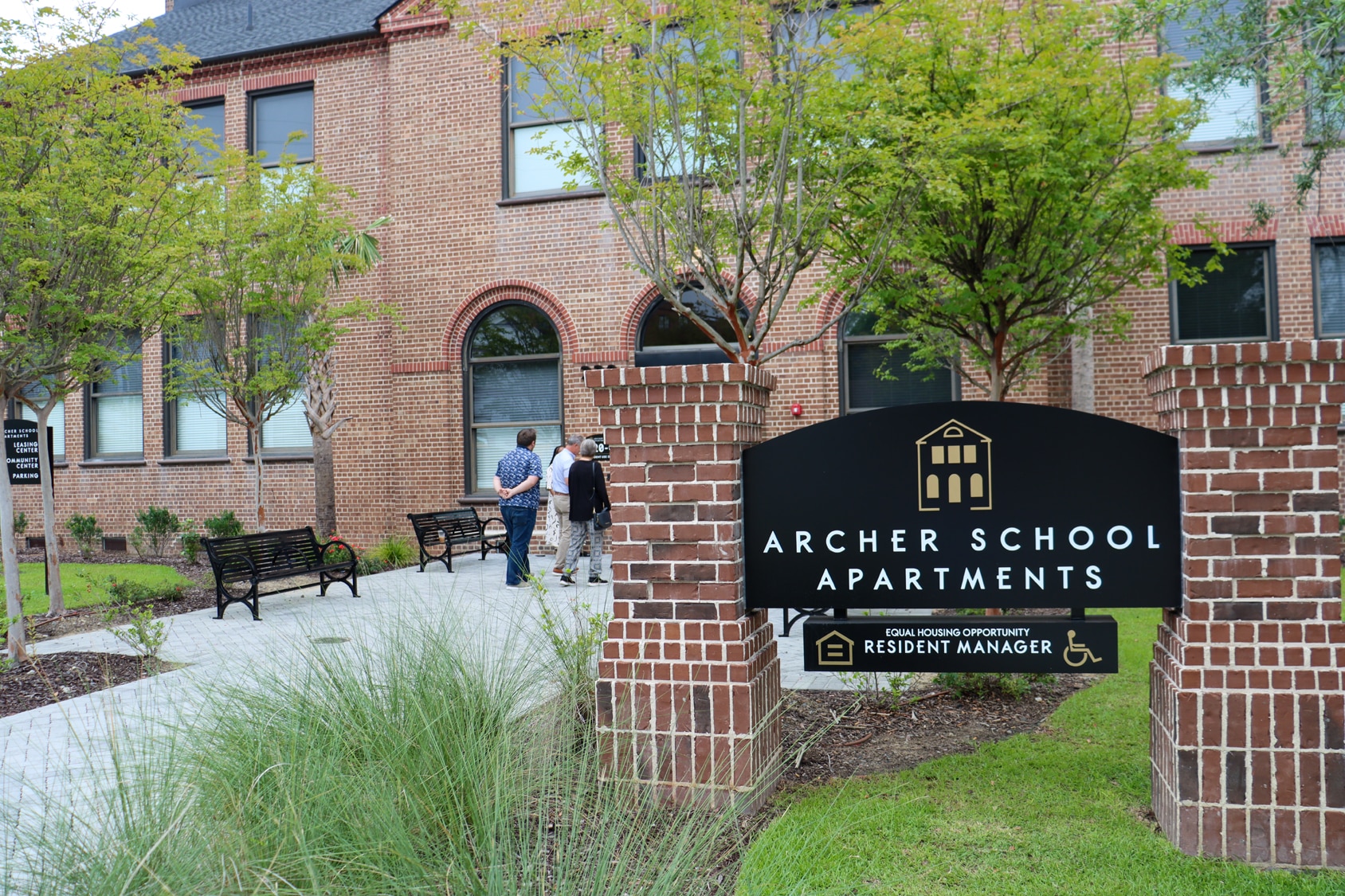
#5 Archer School Apartments
A perfect example of adaptive reuse in action, the Archer School Apartments breathe new life into what was once a cornerstone of community education. Originally built as a school serving local families, the historic building has been carefully restored and reimagined as a modern residential community. This transformation not only addresses the growing demand for housing but also safeguards the architectural character and cultural legacy of the neighborhood.
Walking through the halls, you can still see nods to its past: arched windows that once filled classrooms with light, original brickwork preserved to showcase the craftsmanship of the era, and wide hallways that recall the footsteps of generations of students. By retaining these historic elements, the redevelopment honors the building’s role in the community’s story while giving it a new chapter as a place where people can once again live, grow, and connect.
The Archer School Apartments demonstrate how school building reuse can be a win-win: meeting pressing housing needs without erasing the heritage that makes a neighborhood unique. Instead of demolition, the project embraced preservation, turning a vacant structure into a vibrant residential asset and proving that historic buildings can adapt beautifully to modern life.
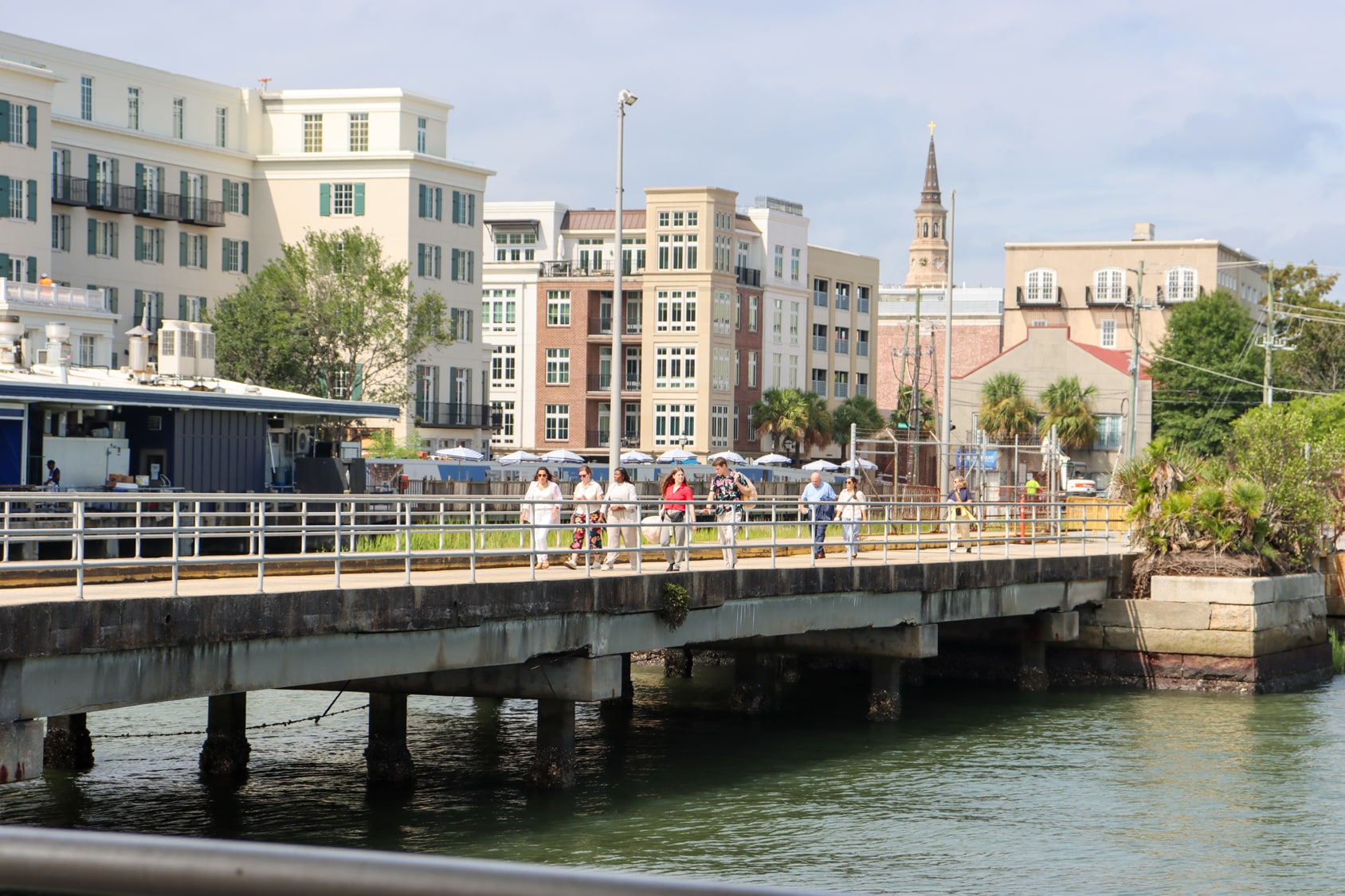
#6 Union Pier Tour
One of the most talked-about projects in Charleston, the Union Pier redevelopment is set to transform a largely industrial port area into a vibrant, 65-acre mixed-use waterfront district. Once a hub for maritime operations, the site is being reimagined as a community-driven space blending residential, retail, public parks, and cultural amenities, all with sweeping views of Charleston Harbor.
During our visit, we were given a rare behind-the-scenes tour of the property, walking through areas that have been off-limits to the public. The presentation itself took place in what was once the old customs office. Standing in that historic room, surrounded by the feel of what once was, it was easy to imagine the decades of commerce that once flowed through the site and to appreciate the vision for what’s to come.
Josh Martin, leading the redevelopment effort, walked us through the extensive planning process. He explained how neighborhood feedback influenced design decisions, from ensuring public access to the waterfront to integrating open green spaces and pedestrian-friendly streets.
Sustainability is at the heart of the Union Pier plan. From resilient infrastructure built to withstand rising sea levels, to stormwater management systems that protect the harbor, to materials and landscaping chosen for environmental durability, every detail is being considered with Charleston’s coastal future in mind.
When complete, Union Pier will not only reconnect the city to its waterfront but also serve as a model for how industrial sites can be thoughtfully redeveloped into dynamic, inclusive, and environmentally responsible urban districts.
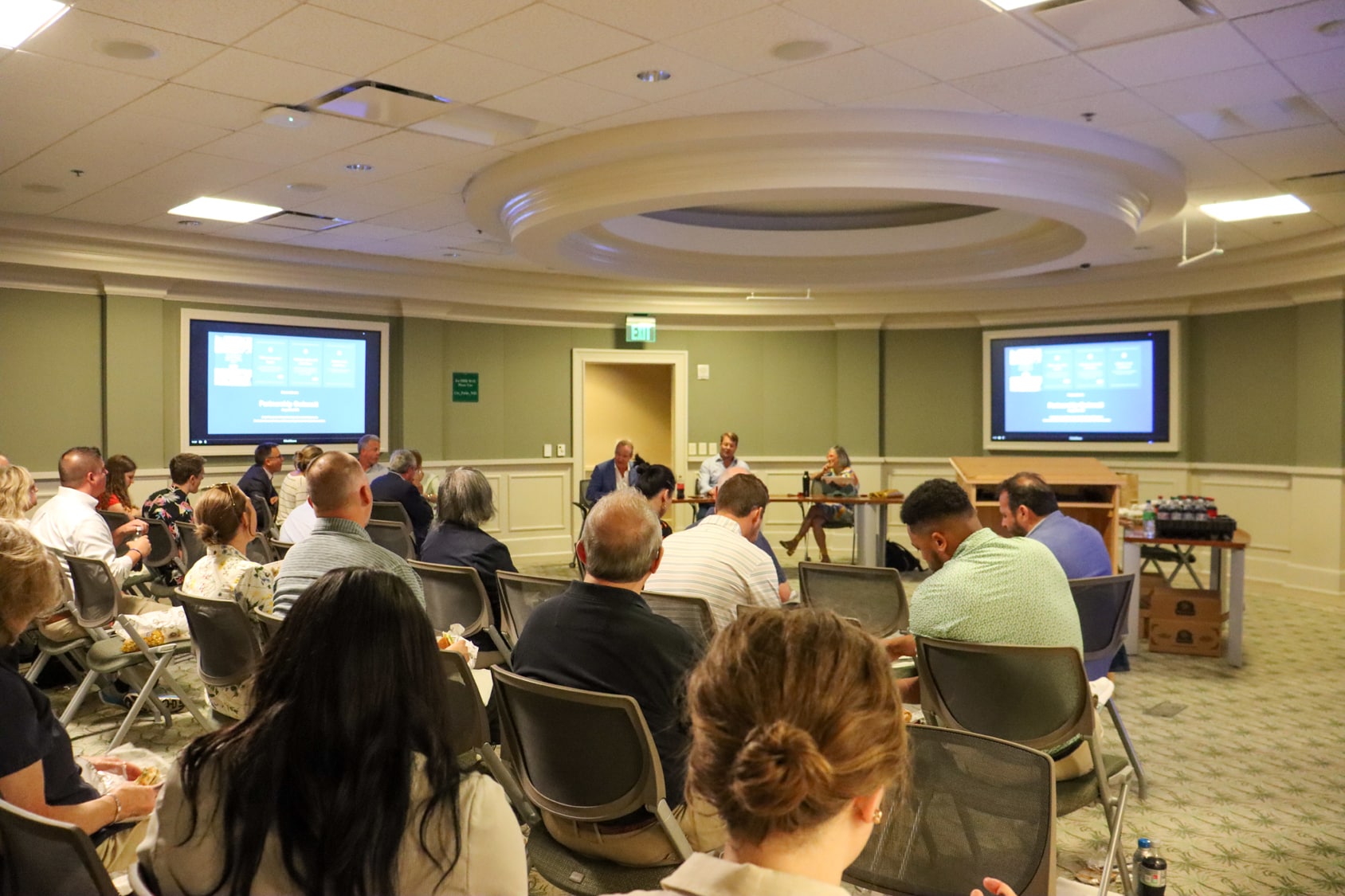
#7 King Street Business Improvement District
King Street, often considered the heartbeat of Charleston’s retail scene, is more than just a shopping destination, it’s a case study in how intentional investment can transform a commercial corridor. Once facing challenges common to busy urban districts, King Street is now thriving thanks in large part to the establishment of a Business Improvement District (BID).
A BID, as Chris Price and Dr. Kendra Stewart explained, is a public-private partnership that allows property owners within a designated area to pool resources for improvements beyond what the city can provide. On King Street, those resources have gone toward enhancing cleanliness, boosting safety, and marketing the area as a premier destination for locals and visitors alike.
During a panel moderated by Joel Reed of Gorman Company, Chris and Dr. Stewart detailed how the BID has created both the structure and funding necessary to keep King Street vibrant. They spoke about the collaborative process that brought stakeholders together, the operational strategies that keep the street clean and inviting, and the marketing efforts that have drawn in more foot traffic and investment.
Perhaps most striking were the “before and after” visuals they shared—photos that illustrated the street’s journey from struggling with litter, uneven maintenance, and underutilized storefronts to becoming one of Charleston’s most attractive and bustling thoroughfares. Today, King Street stands as a living example of how BIDs can breathe new life into urban commercial areas, creating not only economic benefits but also a renewed sense of community pride.
Key Takeaways from Charleston’s Redevelopment Success
- Historic assets can be economic drivers when paired with modern amenities.
- Public-private partnerships are essential to funding and executing large-scale redevelopment.
- Community engagement early and often ensures projects reflect local needs.
- Adaptive reuse not only preserves history but also addresses market demand.
- Business Improvement Districts can sustain momentum long after construction is complete.
The Power of Seeing Redevelopment in Action
Reading about redevelopment strategies is one thing—walking the streets, meeting the leaders, and experiencing the impact firsthand is another. The 2025 Redevelopment Peer Tour gave participants the opportunity to learn directly from those shaping Charleston’s future while sparking ideas for projects back home.
By studying Charleston’s blend of preservation and progress, we left inspired to push boundaries, build coalitions, and reimagine spaces in ways that truly serve our communities.
Interested in joining our next Redevelopment Peer Tour?
Stay connected with Partnership Gwinnett for announcements on future tours, redevelopment events, and professional development opportunities.
Thank Your for Driving Economic Development
Thank you to our sponsors for helping fuel economic development in Gwinnett County: Jackson EMC, Gorman & Company, Sugarloaf CID, Lilburn CID, Evermore CID, and Gwinnett Place CID. Your partnership and support make a lasting impact on our community’s growth and success.
